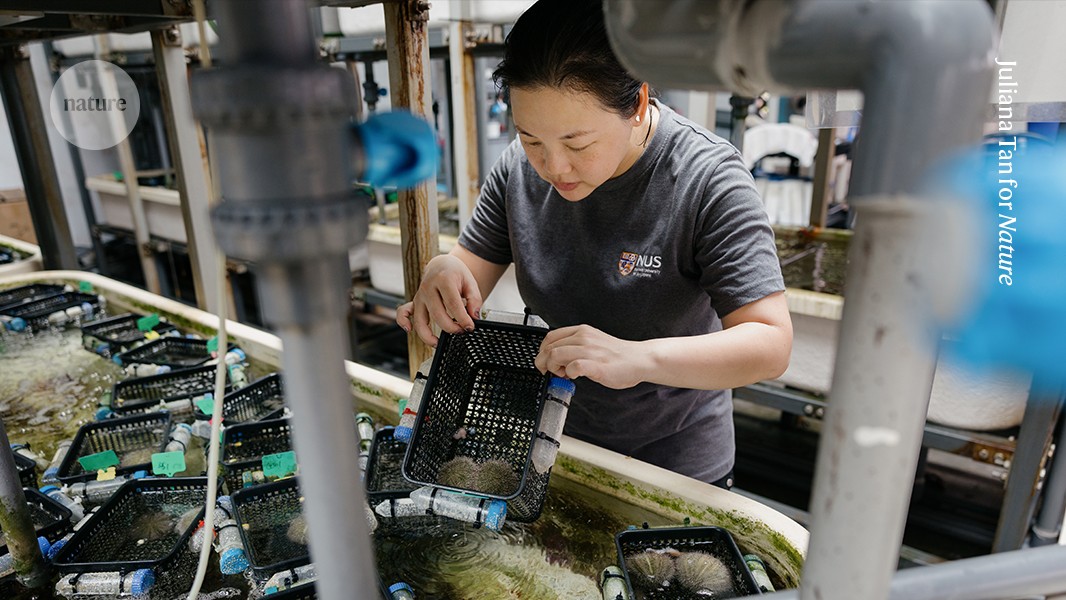
"The tank I'm leaning over contains sand-filtered seawater pumped directly from the ocean. The baskets are kept afloat by air-filled tubes and contain white short-spined sea urchins ( Salmacis sphaeroides). We keep the urchins like this so we can keep track of individuals and reduce the spread of disease. My work aims to understand the ecology of the sea urchins and other marine invertebrates."
"We also host threatened species to guard against extinction: if there was an event that hurt a wild population, I'm fairly confident we could renew the natural stock. Finally, we're exploring how we can use aquaculture to combat damage caused by the wildlife trade. Some marine species in southeast Asia, including sea urchins, are harvested from the wild for aquariums. Perhaps the animal groups we keep here could be sold into the aquarium trade directly instead."
An ecologist at St John's Island National Marine Laboratory cares for white short-spined sea urchins (Salmacis sphaeroides) in tanks supplied with sand-filtered seawater pumped directly from the ocean. The urchins are housed in floating baskets supported by air-filled tubes to track individuals and reduce disease spread. Research aims include understanding sea urchin and marine invertebrate ecology, measuring responses to temperature, salinity and pH changes, and promoting conservation. The facility maintains threatened species as an insurance population to enable renewal of wild stocks after declines. Ongoing work explores aquaculture as an alternative supply for the aquarium trade to reduce wild harvest.
Read at Nature
Unable to calculate read time
Collection
[
|
...
]